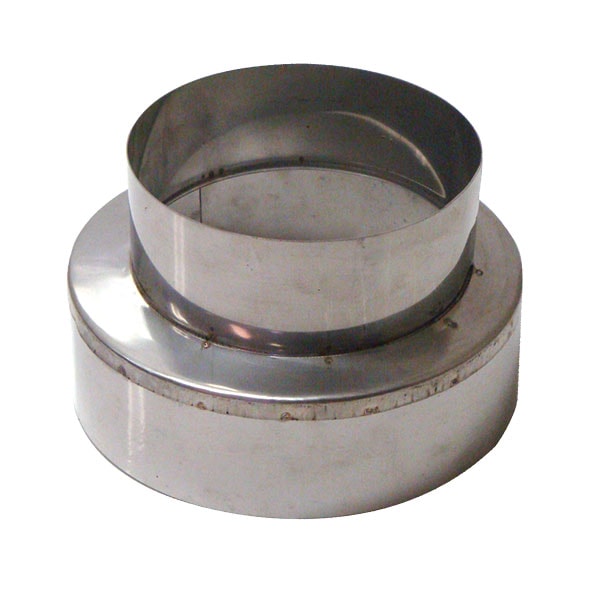
A chimney reducer, also known as a chimney transition or chimney adapter, is a crucial component of your chimney system that helps optimize its efficiency, safety, and functionality. It is used to connect different-sized flue pipes, stovepipes, or venting systems together, ensuring a proper fit and smooth transition for the exhaust gases. Choosing and creating the right reducer for your chimney is essential to prevent issues such as backdrafts, poor draft, and decreased heating efficiency. In this guide, we’ll walk you through the steps to create the right reducer for your chimney.
Step 1: Gather Necessary Information
Before you start creating a reducer for your chimney, gather essential information about your chimney and heating appliance:
Chimney Dimensions: Measure the inner and outer dimensions of your chimney flue. Note any variations in diameter along the length of the chimney.
Stove or Appliance Outlet: Measure the outlet size of your heating appliance (stove, fireplace insert, etc.).
Desired Reducer Size: Determine the ideal size for the reducer, considering the transition between the chimney and the appliance outlet.
Step 2: Choose the Right Material
Chimney reducers are typically made from stainless steel or other heat-resistant materials. It’s crucial to choose a material that can withstand high temperatures and exposure to combustion byproducts. Stainless steel is a popular choice due to its durability and resistance to corrosion.
Step 3: Design and Fabrication
Creating a custom chimney reducer involves a few fabrication steps:
Sketch the Design: Create a detailed sketch of the reducer design, including dimensions and angles. Consider factors such as the length of the reducer and any necessary bends or curves.
Cutting the Material: Use appropriate cutting tools to shape the material according to your design. Ensure precise cuts to maintain proper fit and function.
Bending and Shaping: If your design includes bends or curves, use a sheet metal brake or other bending tools to shape the material accurately. Pay attention to angles and measurements.
Welding or Sealing: If needed, weld the seams of the reducer to create a secure and airtight connection. Alternatively, use high-temperature sealants to seal the seams and joints.
Step 4: Installation
Proper installation is crucial for the effective and safe functioning of your chimney reducer:
Clean the Chimney: Ensure the chimney flue is clean and free from debris before installing the reducer. A clean chimney promotes efficient draft and prevents blockages.
Secure the Reducer: Insert the reducer into the chimney flue and connect it to the appliance outlet. Secure the reducer using appropriate fasteners, brackets, or clamps.
Sealing: Use a high-temperature sealant to create an airtight seal between the reducer and the chimney flue, as well as the appliance outlet. This prevents leaks and ensures proper draft.
Insulation (Optional): Consider adding insulation around the reducer to minimize heat loss and improve overall efficiency.
Step 5: Regular Maintenance
To maintain optimal chimney performance, conduct regular inspections and cleanings. Check the reducer for signs of wear, corrosion, or damage. Clean the chimney and reducer as needed to prevent the buildup of creosote and other deposits.
Creating the right chimney reducer requires careful consideration of chimney dimensions, appliance outlet size, material selection, design, fabrication, and proper installation. By following these steps and guidelines, you can ensure that your chimney system operates efficiently, safely, and effectively, providing you with reliable heating and peace of mind. If you’re unsure about any aspect of the process, it’s advisable to consult with a professional chimney technician or installer to ensure a successful outcome.
Elevate your chimney system with Chimney Liner Depot‘s premium products, including custom reducers, backed by factory ownership and unbeatable prices.
Spring Hill Chimney specializes in seamless installation of custom chimney reducers, ensuring a perfect fit and optimal performance for your chimney system.
